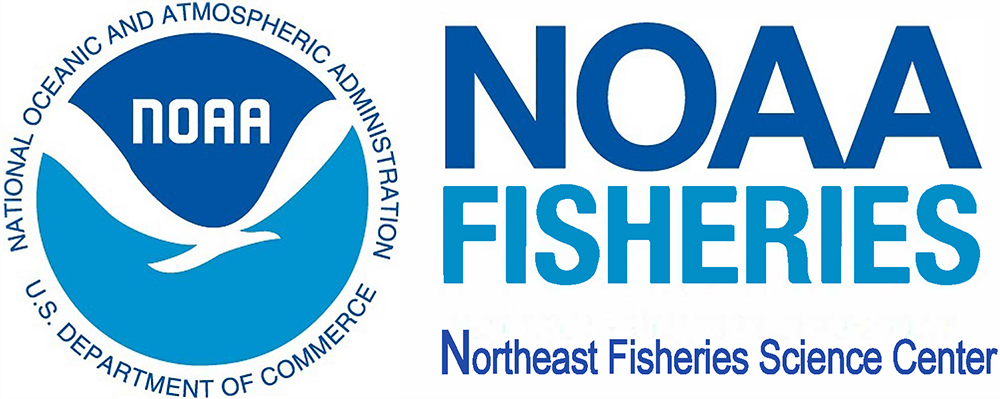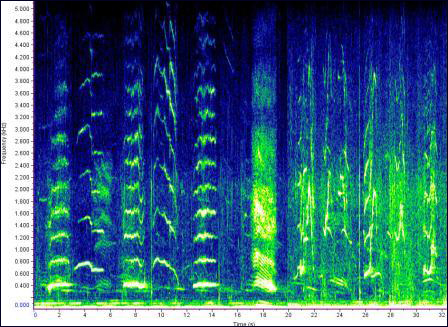Adaptation & Climate Change
This program is a collaboration between the NOAA Northeast Fisheries Science Center and Woods Hole Sea Grant.
Background
What types of adaptations do marine mammals have and how are they dealing with climate change?
In order to survive in their particular habitat, all animals must have structures and behaviors that enable them to obtain food and water, move, maintain body temperature, and attract or find mates. The specific characteristics that an animal possesses which help it survive are called adaptations. Adaptations can be structural (e.g. a bird's beak) or behavioral (e.g. migration patterns).
The current climate is gradually warming at a faster rate than would naturally be expected. This warming trend is mainly due to burning fossil fuels for human energy use, which in turn release carbon dioxide into the atmosphere. Driving our cars with gasoline, heating our house with oil, and coal powered facilities are some of the many ways we're adding carbon dioxide to Earth's atmosphere. These gasses are heat-trapping, creating a blanket effect around the earth which traps reflected solar energy and steadily warms the earth's atmosphere as well as the world's oceans.
In this lesson, students will learn about adaptations and habitat. Specifically, they will explore the physical constraints of the marine habitat and what adaptations marine mammals have that enable them to survive there. They will learn about climate change and how that might influence marine mammal habitat usage. They will learn how human choices can have impacts on marine mammals and what they can do to make a difference.
Lesson Plans
K-2
Grades 3-5
Activity Sheets/Handouts
Human/Dolphin Skeleton Worksheet
Adaptations Activity Picture Sheets
This lesson meets the following Next Generation Science Standards:
- Grades K-2:
- K-LS1-1 - Use observations to describe patterns of what plants and animals (including humans) need to survive. In this lesson, students explore the marine habitat and the adaptations required by mammals to survive there.
- 2-LS4-1 - Make observations of plants and animals to compare the diversity of life in different habitats. In this lesson, students compare and contrast marine and terrestrial habitats and then observe various marine mammals species and compare their adaptations to those found on land.
- Grades 3-5:
- 3-LS4-3 - Construct an argument with evidence that in a particular habitat some organisms can survive well, some survive less well, and some cannot survive at all. In this lesson, students analyze various marine mammals and discover the adaptations that make them best suited for the marine environment.
- 4-LS1-1 - Construct an argument that plants and animals have internal and external structures that function to support survival, growth, behavior, and reproduction. In this lesson, students compare the external and internal anatomy of a human and harbor porpoise and relate it to the animal's habitat.
- 4-ESS3-1 - Obtain and combine information to describe that energy and fuels are derived from natural resources and their uses affect the environment. In this lesson, students learn about fossil fuel consumption and climate change.
Additional Resources
- Port Townsend Marine Science Center- Orca Bone Atlas: This is a great resource that shows an Orca skeleton and allows you to see 3-D views of various parts of the Orca.
- Monterey Bay Aquarium: Video on adaptations and climate change (we use this in our lesson).
- Seal versus Sea Lion taxonomy activity: This activity allows you to compare seal and sea lions by looking at images and watching video.
- All about blubber: These experiments allow students to test the effectiveness of blubber.
- US Global Change Research Program: Resources for educators on climate change and human health.
- Climate Literacy Framework: The essential principles of climate science
- The Nature Conservancy: Calculate your carbon footprint! Try it out!
- CarbonVisuals: A great product that gives a visual display of New York City's greenhouse gas emissions.
- Smithsonian National Museum of Natural History:: Ocean Portal: Animated video showing the evolution of a whale.
- The World Bank- YouTube Video: "World Could Be 4 Degrees Hotter by End of This Century."
- Reality Drop: Brought to you by The Climate Reality Project; a site that brings together collections of climate change myths and provides facts on public issues.
- Kids' Crossing: A resource for science education from the National Center for Atmospheric Research and the University Corporation for Atmospheric Research. Resources and games about climate, weather and the atmosphere.
- NASA's Climate Kid Many resources on global climate change topics. Games, activities, answers to the "big questions," and more!
- The Guardian- Earth's electric night video: Video from Nasa satellite showing the electrical footprint across Earth's surface including electric light, gas flares, bush fires, and fishing boats.
- Green Ninja: An environmental superhero fighting climate change- watch the show! There's also an engaging curriculum and resources for teachers and students.
- Fish and People: 5 video and lesson modules using animation to visualize the human-fish relationship.
- NASA Climate: Important information on sea level rise, plus fact sheets and information on climate change.
- Sea Grant - BRIDGE Ocean Science Education: Teacher approved marine education materials.
This program is a collaboration between the NOAA Northeast Fisheries Science Center and Woods Hole Sea Grant.
Scientist Spotlight

Coastal Processes Specialist
Woods Hole Sea Grant and Cape Cod Cooperative Extension
Greg provides technical assistance to local towns on coastal geology topics such ass shoreline change, coastal flood plains, and more.

Research Fishery Biologist
Northeast Fisheries Science Center
Kimberly analyzes how seals are using their habitat and how that usage changes with the seasons.




